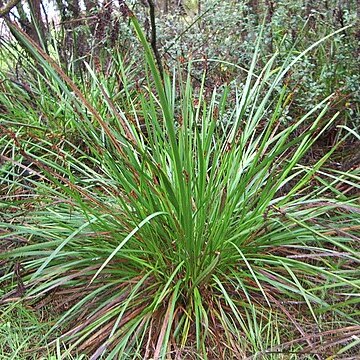Infl. paniculate or often contracted to a simple or branched spike. Spikelets fascicled or distant, 1–4-fld; the uppermost fl. hermaphrodite, fertile, the lower fls sterile or male. Glumes 4–7, ± distichous, persistent, 1 or more lower ones empty, central glumes fertile and uppermost glume empty. Hypog. scales 6, minute and hyaline at anthesis, becoming enlarged and spongy with maturation of the fr. and falling with it, occ. united below into a cup and occ. each scale produced at the tip into a filamentous seta. Stamens 3. Style-branches 3; style-base thickened. Nut oblong or oblong-ovate or occ. elliptical, ± trigonous, crowned by the persistent style-base. Perennial herbs us. with creeping rhizome. Culms laterally compressed, terete, or angled. Lvs all basal, similar to culms, or all reduced to sheathing bracts. About 50 spp., mainly Australian, but 3 spp. recorded from elsewhere in the Pacific. One N.Z. sp. is endemic, the other two occur also in Australia.
Herbs, perennial. Rhizomes short, woody. Culms tufted, erect, terete or flattened. Leaves basal, distichous, usually equitant; leaf blade terete or flattened, similar to culm, sheathing. Inflorescences paniculate. Spikelets narrowly ovoid-oblong. Flowers usually (1 or)2 or 3(-5), proximal one usually functionally male, distal one bisexual. Glumes 3-8, seemingly spirally arranged, mostly distally scaberulose, basal ones empty. Perianth scales [3 or]6, shorter than nutlet, fleshy. Stamens 3; connective apex apiculate. Style slender, base persistent. Nutlet oblong or oblong-ellipsoid, ± terete, usually smooth and shiny.

